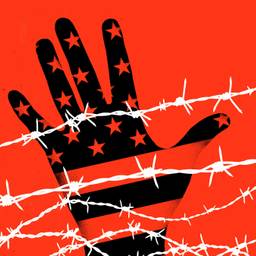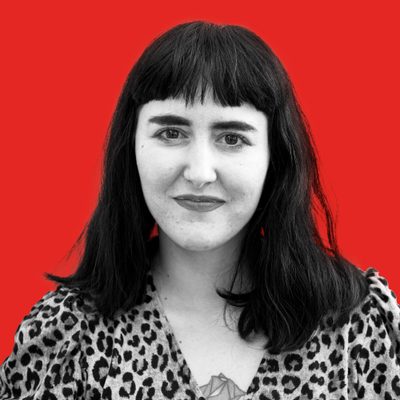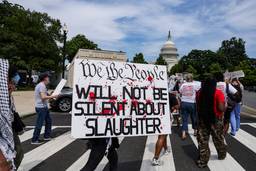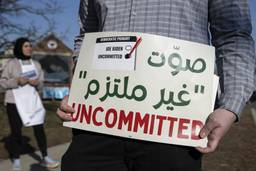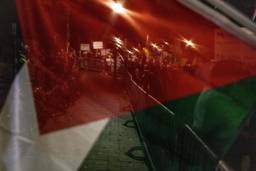The Sanctuary Movement Put U.S. Foreign Policy on Trial
What can it teach our movements today?
Natascha Elena Uhlmann
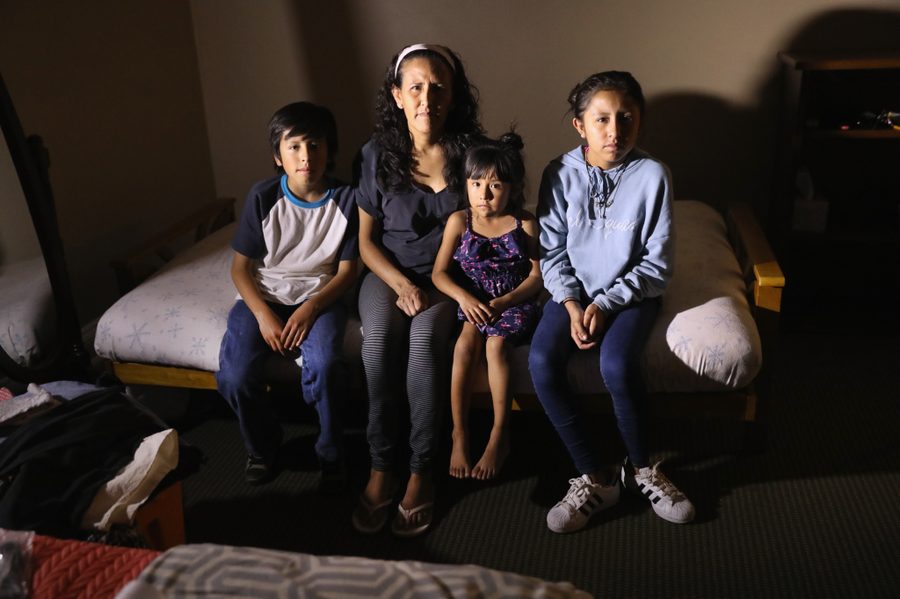
Forty-two years ago, a Tucson congregation changed the landscape of immigration politics when what started with a legal clinic for Central American asylum seekers quickly grew into a nationwide movement.
Now, some immigration scholars who have tracked the Sanctuary Movement for many years say the spirit of the movement is alive and well in student organizing for Gaza.
The Sanctuary Movement was born in the ‘80s against the backdrop of repression, death squads, and massacres in El Salvador and Guatemala. Refugees were arriving at the U.S.-Mexico border in desperate search of safety, but few would find the refuge they sought. Recognizing the claims of asylum seekers would require admitting to President Ronald Reagan’s own complicity in funding and enabling these atrocities. As such, the government deemed them “economic migrants,” with no claim to safety.
Following the deaths of 13 Salvadoran asylum seekers in Arizona’s Organ Pipe Cactus National Monument, Rev. John Fife, then-minister of Tucson’s Southside Presbyterian Church was called to action: he and a small group of activists put together a legal aid clinic to help refugees apply for asylum. Quickly, it became clear this was not the answer: Guatemalan and Salvadoran asylum seekers’ applications were being denied at a rate of about 98%. “We’d take in guys who had torture marks, and the judge would order them deported the next day,” Fife recalls. Something else had to be done.
“I don’t think we have any choice under the circumstances. We have to start helping people cross the border without being captured by border patrol,” Fife recalls Jim Corbett, a friend and fellow clinic volunteer, asserting.
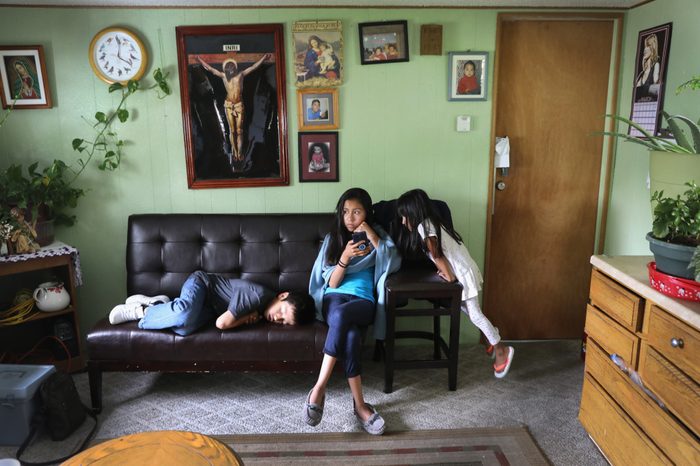
Corbett pointed to key moments in the Church’s history that he felt must inform their actions: the abolition movement, when people of faith helped runaway enslaved people cross state lines to safety, and the Church’s failure to protect Jewish people fleeing the Holocaust. “After a couple of sleepless nights, I went back to him and said, ‘You’re right. I’d have to burn my ordination certificate if I told you no,’” Fife recalls.
An underground network soon emerged that transported asylum seekers across the border and into their homes — and before long, to Southside Presbyterian Church. This continued for months, before they learned their covert operation was not so covert after all: they’d been found out, says Fife, and were warned by the Border Patrol Intelligence Unit to stop or be indicted.
“We knew we couldn’t stop … the only thing we could think of under the circumstances was to go public,” Fife said. The Southside Presbyterian congregation voted overwhelmingly to do so, and in March 1982, publicly declared the church a sanctuary for Central American refugees.
Within a year, as many as 1,600 asylum seekers made their way through the church and to safe houses across the country.
“Up to that point, we had never discussed starting a movement. We had only discussed, ‘What do we need to do before we’re indicted?’ But, much, to our astonishment, a movement started,” Fife said.
Calls from other congregations began flooding in: “What’s this sanctuary idea? How do we do it?” So, too, did infiltrators. Immigration and Naturalization Service (INS) agents and paid informants posed as congregants in an effort to gather evidence against members of the movement. For a time, the government determined that pressing charges would make martyrs out of movement leaders, but when the movement failed to die out, they clearly changed course. The Justice Department indicted Fife in January 1985 along with Corbett and 14 others.
The resulting trial sparked a media firestorm. In a shocking move, U.S. District Court Judge Earl Carroll prohibited testimony on U.S. foreign policy, conditions in Central America and the defendants’ religious motivations. Unable to mount a meaningful defense in the courtroom, the defendants instead made their case on the steps just outside, with a candor that drew national attention: “The reporters would say, ‘Well, you were accused in court of doing a border crossing with so many people on such and such a date. Did you do that?’” Fife recalls. “And we’d say, ‘Yeah, of course, we did that. And matter of fact, we’re doing another one tomorrow, would you like to go along?’”
Fife, Corbett and many others had come to see their work not as civil disobedience, but civil initiative: it was the government, after all, that was engaged in wrongdoing — not them. Deporting asylum seekers to a vacuum of terror and persecution was a violation of the Refugee Act of 1980, they argued, meaning their duty to act was not just moral, but lawful. “I think that’s one of the factors that enabled the Sanctuary Movement to grow as strongly as it did, we would say to the churches: ‘No, you’re not violating a law, you’re not doing civil disobedience. It’s the government that’s committing the crime here.’”
A banner that hung in Southside Presbyterian throughout the trial read: “The truth will set you free.” Following the convictions of 8 movement members, a volunteer added a sheet of paper to the banner reading: “eventually.”
The convictions did little to slow the movement. Their numbers had more than doubled, and they pressed forward with a new strategy: a civil suit. After a federal judge granted them the right to put the Attorney General and head of the INS under oath, they were promptly offered a settlement yielding a series of reforms to the asylum process.
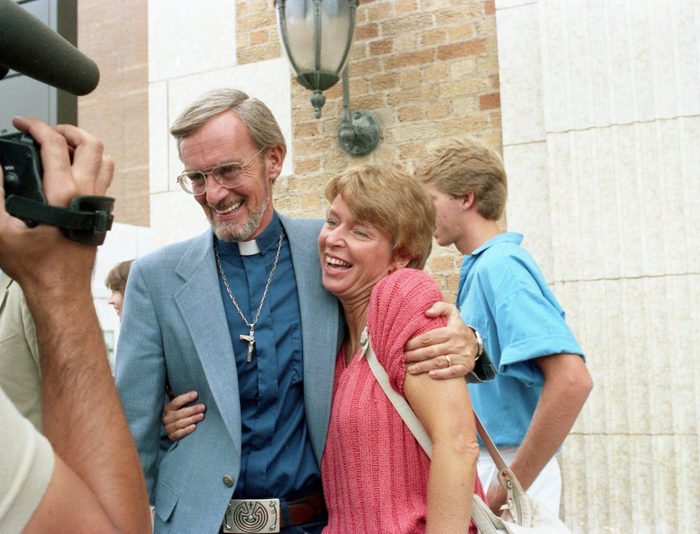
The Sanctuary Movement emerged at a time not unlike our own — where great injustices were perpetrated in the shadows, and sustained by indifference. Through a fearless articulation of moral values, the movement mobilized people of conscience to see the cause of immigrant justice as their own. The movement’s founders may not have seen themselves as revolutionaries, but they illustrated the revolutionary promise of community.
“We need to honor the idea that it takes ordinary citizens, the spaces that they hold sacred … [to] create refuge that is denied by our policies,” notes organizer and historian Rachel Ida Buff, who teaches on immigration politics at the University of Wisconsin-Milwaukee. “It was really a non-governmental response to the failure of the international system.”
Creating refuge, as it turns out, is inherently politicizing: in opening their doors to those seeking safety, faith communities across the country joined the broader fight against U.S. immigration policy and imperialism. It’s easy, after all, to turn a blind eye to an abstraction. It is much harder to shut the door on a human being. “Immigrants are community members, and that’s why we have to do what we can to protect them from these unjust enforcement measures,” notes Victor Narro, an organizer and lecturer at UCLA’s Labor Center.
To find the Sanctuary ethos in practice, one need not venture to the nearest church or the courtroom, says Buff. The spirit of the movement is alive and well in student protests for Gaza across the country.
“What we’ve seen [in these encampments] is this really sacred space of mutual solidarity, created by young people but inclusive of entire communities, where we’re educating and feeding and caring for each other. Absolutely I think that’s in the sanctuary tradition,” saidsays Buff.
Facing down a vicious machinery of state repression, many students have put their bodies on the line in a refusal to let their institutions’ complicity go unchallenged. Just as the Sanctuary Movement forced society to contend with the immoral and unlawful nature of U.S. immigration policy, the fierce suppression of Gaza solidarity encampments has only emphasized the Biden administration’s deep complicity in genocide. After all, it is the Biden administration that is in violation of international law. It is the Biden administration that enables a genocide with our tax dollars, as students are beaten and criminalized. It is the Biden administration that — as more than 37,000 Palestinians have been killed and millions more displaced—sends weapons to Israel every 36 hours.
“What’s really threatening about the encampments is [that] they represent another way to be. I see it with our students, it’s infusing them with confidence. It’s a model of mutual care and self respect,” Buff said.
But despite violent sweeps and mass arrests, the movement endures.
“I don’t know that there’s any walking this back,” Buff adds. “Our students are now saying, ‘Ok, we’ll be here all summer and fall if that’s what it takes.’”
In These Times is proud to share that we were recently awarded the 16th Annual Izzy Award from the Park Center for Independent Media at Ithaca College. The Izzy Award goes to an independent outlet, journalist or producer for contributions to culture, politics or journalism created outside traditional corporate structures.
Fellow 2024 Izzy awardees include Trina Reynolds-Tyler and Sarah Conway for their joint investigative series “Missing In Chicago," and journalists Mohammed El-Kurd and Lynzy Billing. The Izzy judges also gave special recognition to Democracy Now! for coverage that documented the destruction wreaked in Gaza and raised Palestinian voices to public awareness.
In These Times is proud to stand alongside our fellow awardees in accepting the 2024 Izzy Award. To help us continue producing award-winning journalism a generous donor has pledged to match any donation, dollar-for-dollar, up to $20,000.
Will you help In These Times celebrate and have your gift matched today? Make a tax-deductible contribution to support independent media.
Natascha Elena Uhlmann is the Audience Engagement Editor at In These Times. A writer and organizer, her work has appeared in The Guardian, Truthout, Rewire News, and Teen Vogue. She is also the author of Abolish ICE.
